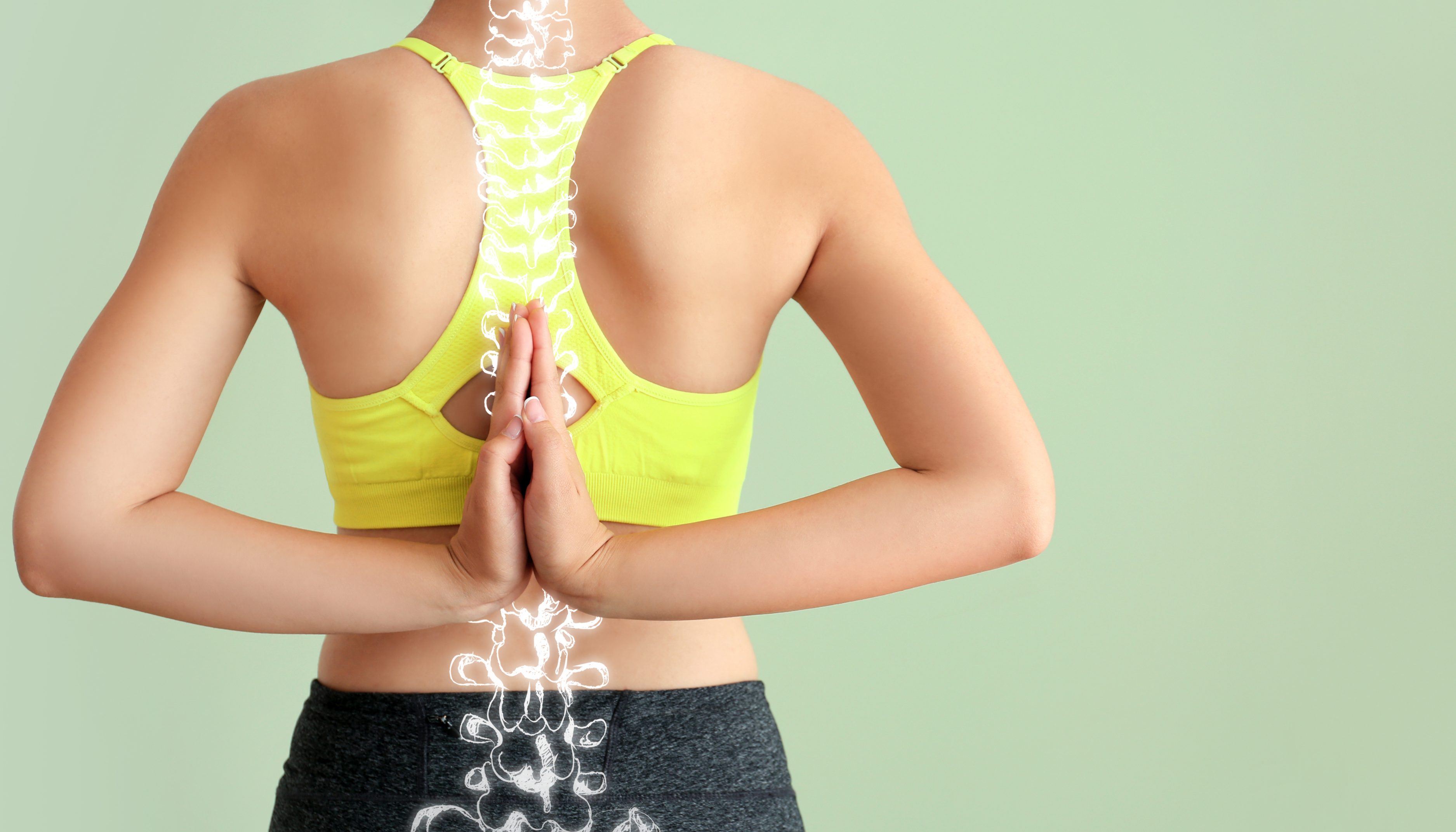The spinal cord is one of the most important parts of your body. It allows you to stand or sit upright, it supports your head and neck, and it allows you to bend and move as freely as you do. Here are some fun facts about the human spine and some ways to deal with back pain!
Fun facts about the spine:
- There are over 120 muscles in your back.
- ¼ of your spine is made of cartilage, which can expand and contract. Combine this with gravity, and this is why you are a little shorter at night- or taller in space!
- Your muscles have memory, so your posture is a habit that your spine remembers. (This means it’s also possible to train your back muscles to have good posture.)
- Both giraffes and humans have seven vertebrae in their necks!
- Another name for your spinal column is your vertebral column.
- There are over 100 joints in your spine that help with flexibility and movement.
- The spine is the first bone to form in the womb, happening 2 months after conception.
- Most back pain is lower back pain, due to twisting and pulling.
- If your spine was separated from your body, it is so flexible that it could bend 2/3 of a circle.
- Your spine functions independently of your brain and can send signals directly to your muscles, like muscle spasms.
- Smoking affects your spine, and it increases back pain by reducing blood flow and circulation to the affected areas.
- Humans are the only creatures affected by scoliosis and it’s found primarily in women.
- Being pregnant can throw out the curve of your spine and cause pain, but when people carry jugs of water on their heads, it keeps the proper spine curvature, and it doesn’t cause back pain.
- The connections between the top vertebrae and the skull allow our heads to look up and down, and the connections between the top and second vertebrae allow us to look side to side.
Leading causes of back pain:
- Poor posture, which holds weight in areas that can’t support it properly.
- Car accidents
- Muscle or ligament strain from improper lifting or movement
- Bulging or ruptured disks
- Arthritis
- Osteoporosis
How to help heal back pain:
Avoid bed rest.
It used to be believed that an abundance of lying down would help your back pain, but recently, it’s been discovered that more than a day or two can cause more harm than good. Absolutely allow your body to recover with rest, but recognize that movement is essential to the healing process.
Get moving.
Whether it be stretching, walking, or going for a swim, easy movements help to stretch, strengthen, and stabilize back muscles, reducing pain and getting you back on your feet. Just be careful not to push yourself too hard and risk further injuring your back.
Fix your posture.
The human spine is designed to carry your body weight, but when you slouch or hold yourself out of alignment, your body has to carry weight in areas that aren’t designed for it, causing further pain. (Like when you get stuck in the front row of a movie theatre and your neck hurts afterward from having to look straight up for an hour and a half.)
Sit as comfortably as possible.
Find a well-cushioned chair that offers back and lumbar support. This will help your body stay aligned, even when sitting. If you also have tailbone problems, there are cushions out there designed to distribute your body weight away from your tailbone. Create the most ergonomic sitting position possible to support your back.
Allow your body to relax.
Whether this is by meditating, watching a movie, or chilling in a hot tub, you can release tension and pain in your body by taking time to relax. Perpetual tension and stress on your muscles- particularly your spine- can cause severe pain, muscle cramps, and loss of function in the future.
Sleep comfortably.
Whatever your sleeping position is, find the way that works best for you. If you place a pillow in between your legs when you sleep on your side, it helps to keep your spine in alignment. Invest in a good mattress and pillow that helps you sleep deeply and comfortably.
Stretch it out.
By properly stretching, you increase blood flow and decrease high blood pressure throughout your spine and body, which releases tension and reduces pain. Stretching also improves posture, which can prevent misalignment-induced injuries.
Hot and cold treatments.
Use a heating pack if your muscles are tight and an ice pack when they are inflamed.
When self-treatments aren’t enough, seek professional help.
Be it a massage therapist, a chiropractor, an acupuncturist, or a physical therapist, a professional will help with pain relief and get you back on your feet.
Since spinal injuries account for about 80% of disability claims and pain worldwide, it is important to understand a bit about one of our largest body parts. While not all back pain is avoidable, a lot of it is and most of it is treatable without needing surgery. Be sure to take some time today to help your spine feel just fine!
Any links included are for reference, additional information, or entertainment value only, without monetary compensation. Contact us on social media or at [email protected]. Photos courtesy of Unsplash.
This article is not intended to act as or replace medical advice. Please talk to your healthcare practitioner if you have any concerns.
Written by Kayla Willsey
Updated May 27, 2021

